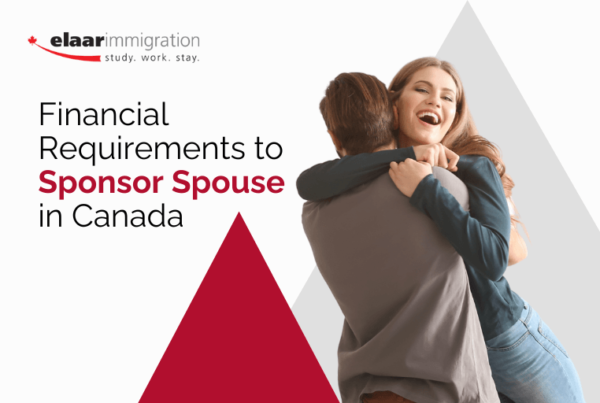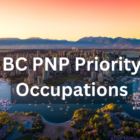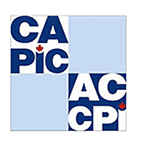Canada has long been a popular destination for international students seeking high-quality education and diverse cultural experiences. But for many, the journey doesn’t end with graduation. If you’ve fallen in love with Canada during your studies and are considering making it your permanent home, you’re not alone. This comprehensive guide will walk you through the process of transitioning from a student visa holder to a permanent resident in Canada.
Understanding the Basics to Student Visa to PR
- Study Permit (Student Visa): When you arrive in Canada as an international student, you’ll need a study permit (a student visa). It allows you to study at a Canadian institution. Make sure you have an acceptance letter from the school and enough money to cover tuition and living expenses.
- Post-Graduation Work Permit (PGWP): After completing your studies, you may be eligible for a PGWP. This permit allows you to work in Canada for up to three years, depending on the length of your study program. Gaining Canadian work experience through a PGWP can significantly enhance your chances of qualifying for permanent residency.
- Express Entry System: Completing an Express Entry profile is the first step to immigrate to Canada permanently as a skilled worker. After gaining experience in Canada you can apply for one of the Express Entry pathways. Most of the international go for the Canadian Experience Class (CEC) and Federal Skilled Worker Program (FSWP).
- Canadian Experience Class (CEC): The CEC is a permanent residency visa program for individuals with Canadian work experience. If you’ve worked in Canada after graduation, you can apply under this category. Ensure that your work experience meets the CEC requirements.
- Other Categories: Explore additional permanent resident categories, such as the Federal Skilled Worker Program (FSWP) and the Provincial Nominee Program (PNP) streams that don’t require Canadian work experience.
- Provincial Nominee Programs (PNPs): Many Canadian provinces have PNPs that allow them to nominate candidates for permanent residency based on their skills, work experience, and ties to the province. Research PNPs in the province where you’ve studied or worked.

To transition from a study permit to permanent residency (PR) in Canada, it’s essential to understand the various immigration pathways available and the specific requirements associated with each. Here’s a detailed overview of the key programs, language and skills classification, and the steps you need to take.
Understanding Language and Skills Classification Requirements
Canadian Language Benchmark (CLB)
The CLB is the national standard that describes, measures, and recognizes the English language ability of individuals who plan to live and work in Canada or apply for citizenship. For those assessing their French language skills, the Niveaux de compétence linguistique canadiens (NCLC) serves a similar purpose.
Validity: Language test results are valid for two years from the test date and must be valid at the time of your PR application.
Different immigration programs require different CLB levels. For example:
- Canadian Experience Class (CEC): CLB 7 is required for TEER 0 or 1 occupations, CLB 5 for TEER 2 or 3.
- Federal Skilled Worker Program (FSW): CLB 7 is required for all occupations.
- Federal Skilled Trades Program (FSTP): CLB 5 is required for speaking and listening, CLB 4 for reading and writing.
- Provincial Nominee Programs (PNPs) have varying CLB requirements depending on the province and stream.
- Atlantic Immigration Program (AIP): CLB 4 is required.
Job/Occupation Category
The NOC categorizes jobs in the Canadian labour market according to the skills, education, and experience required. It uses TEER (Training, Education, Experience, and Responsibilities) levels:
- TEER 0, 1, 2, and 3: Considered high-skill occupations eligible for skilled worker programs.
- TEER 4 and 5: Occupations that typically require less formal education and may include on-the-job training.
Journey from Student Visa to Permanent Resident in Canada
Step 1: Apply for and Obtain a Study Permit
Begin by applying for and successfully obtaining a study permit from Immigration, Refugees and Citizenship Canada (IRCC). This document allows you to legally study at a designated learning institution in Canada.
- To get a study permit, you’ll need to provide:
- Proof of acceptance from a designated learning institution
- Evidence of sufficient funds to cover tuition, living expenses and return transportation
- A letter of explanation for your studies in Canada
- A passport valid for the duration of your intended stay
- Police certificates if required
- Medical exams if required
Once you have your study permit, you can proceed to the next steps:
Step 2: Complete Your Studies
Successfully complete your program of study at a designated learning institution in Canada while maintaining your status as a full-time student.
Step 3: Apply for a Post-Graduation Work Permit (PGWP)
After graduation, you can apply for a Post-Graduation Work Permit. This is a crucial step as it allows you to gain valuable Canadian work experience, which is often a key factor in permanent residence applications. The PGWP is usually valid for up to three years, depending on the length of your study program.
Key points about the PGWP:
- You must apply within 180 days of receiving your final grades
- Your study permit must have been valid at some point during these 180 days
- You must have completed a program of at least 8 months in duration
- The program must have been at a designated learning institution
Step 4: Gain Canadian Work Experience
Use your PGWP to work in a skilled occupation in Canada. Gaining at least 1 year of skilled work experience is required for some permanent residence pathways.
Step 5: Choose Your PR Pathway
1. Canadian Experience Class (CEC)
- Eligibility: To qualify, you need at least 12 months of skilled work experience in Canada within the last three years. This experience must be in a job classified under TEER 0, 1, 2, or 3 of the National Occupational Classification (NOC).
- Application Process: The CEC is managed through the Express Entry system. You will create an Express Entry profile and be ranked based on the Comprehensive Ranking System (CRS). Candidates with competitive scores receive Invitations to Apply (ITA) for permanent residency.
2. Federal Skilled Worker Program (FSW)
- Eligibility: Unlike the CEC, the FSW does not require Canadian work experience. Instead, you must have at least 12 months of full-time skilled work experience in a skilled occupation outside Canada. You will also need to meet minimum language proficiency and education requirements.
- Application Process: Similar to the CEC, the FSW operates under the Express Entry system. Your profile will be ranked based on CRS points, and you may receive an ITA if your score is high enough.
3. Provincial Nominee Programs (PNPs)
- Eligibility: Each province has its own criteria, but many PNPs have streams specifically for international graduates. Typically, you will need a job offer from an employer in the province or have completed your studies there.
- Application Process: If nominated by a province, you can apply for permanent residency through the federal government. Each province has its own application process and requirements.
4. Quebec Experience Program (PEQ)
- Eligibility: If you studied in Quebec, the PEQ offers a streamlined pathway to permanent residency for international students who have completed their studies in the province and have a certain level of French language proficiency.
- Application Process: The application process for the PEQ is distinct from other pathways and requires proof of your education and language skills.
In addition to the more commonly known pathways to permanent residency in Canada, several less popular options cater to specific groups of international graduates and skilled workers.
- Federal Skilled Trades Program (FSTP) is designed for individuals with experience in skilled trades, requiring at least two years of work experience and a job offer or certification from a Canadian authority in the trade.
- Atlantic Immigration Program (AIP), which targets skilled workers and international graduates from publicly funded institutions in the Atlantic provinces, requiring a full-time job offer and proof of living in the region for a specified time.
- Business Immigration is another important category that allows international students to gain permanent residency in Canada through investment or entrepreneurial activities.
Step 6: Meet Program Requirements
Ensure you meet all eligibility criteria for your chosen permanent residence pathway.
Step 7: Apply for Permanent Residence
Prepare and submit your permanent residence application, including all required documents and fees. Processing times vary by program.
Tips for a Successful Transition from Student Visa to Permanent Residency in Canada
- Start Early: Begin planning your path to permanent residence as early as possible, ideally while you’re still studying.
- Maintain Legal Status: Always ensure you have valid status in Canada, whether as a student or a worker.
- Keep Detailed Records: Maintain thorough records of your studies, work experience, and any volunteer activities.
- Improve Your Language Skills: Strong language skills can significantly boost your chances of successful immigration.
- Network: Building professional connections can help you find job opportunities and integrate into Canadian society.
- Stay Informed: Immigration policies can change. Keep yourself updated on the latest rules and requirements.
- Seek Professional Help if Needed: If your case is complex or you’re unsure about any part of the process, consider consulting with a registered immigration consultant or lawyer.
Common Challenges and How to Overcome Them
1. Finding Relevant Work Experience
Solution: Start job hunting early, use your school’s career services, attend job fairs, and consider internships or co-op programs.
2. Meeting Language Requirements
Solution: Practice regularly, take language courses, and consider language exchange programs.
3. Navigating Complex Immigration Procedures
Solution: Use official government resources, attend immigration information sessions, and seek professional advice when needed.
4. Dealing with Homesickness and Cultural Adjustment
Solution: Join cultural groups, maintain connections with family and friends back home, and actively participate in your local community.
The Benefits of Becoming a Permanent Resident
Transitioning from a student to a permanent resident opens up a world of opportunities:
- Career Flexibility: You can work for any employer in Canada without needing a work permit.
- Access to Social Benefits: You’ll have access to Canada’s healthcare system and other social benefits.
- Education Opportunities: You can continue your education at Canadian rates (which are often lower than international student rates).
- Path to Citizenship: Permanent residence is a step towards Canadian citizenship if that’s your ultimate goal.
- Family Reunification: As a permanent resident, you may be able to sponsor certain family members to join you in Canada.
Transitioning from Study Visa to Canada PR?
Apply for your PR Application with the help of our Licensed RCIC Experts.
Need help?
The journey from international student to permanent resident in Canada is a challenging but rewarding process. It requires careful planning, hard work, and patience. That’s where our professional advice comes in. Keshav Sharma, a licensed expert and Regulated Canadian Immigration Consultant, leads a team of seasoned professionals. Our team is equipped with the knowledge and experience to guide you through every step of the process. Don’t leave your immigration journey to chance. You can contact our experts today to get started on your Canada visa application.









